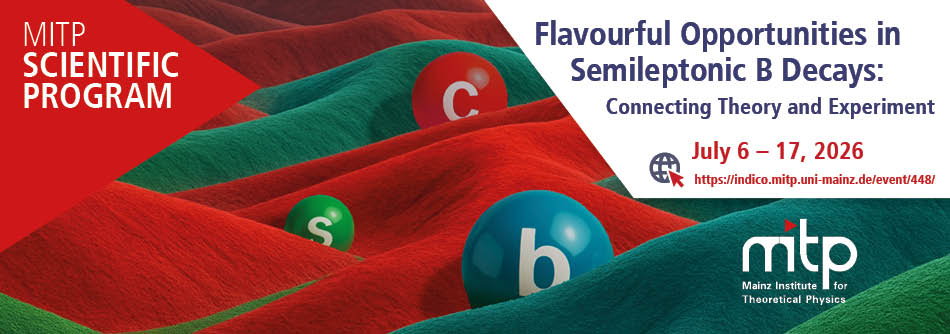Registration closes 06 March 2026 11:59 P.M. CET.
The year of 2026 will mark a pivotal moment for research in Flavour Physics, both in the Standard Model and Beyond. In the spring, LHC experiments will enter a long shutdown to get ready for the high-luminosity phase starting in 2030, with the LHCb experiment closing its first run with a triggerless readout. Furthermore Belle II will be releasing the legacy measurements from its $\sim$ 0.5 ab$^{-1}$ dataset collected until 2024. This will therefore be a perfect moment to revise the current situation in semileptonic $B$-meson transitions, which have been recently plagued by intriguing anomalies like the $R(D^{(*)})$ discrepancies, the $|V_{cb}|$ puzzle, the potential deviations in $B\to K^{(*)}\mu\mu$ decays or the fascinating $B^{+}\to K^{+}\nu\bar{\nu}$ measurement.
The aim of the Scientific Program is to bring together the flavour theory and experimental communities, to work closely and pave a way forward. Indeed, one of the objectives of the Program is to help the theory community to fully digest the upcoming Belle II and LHC flavour measurements, by directly interacting with the researchers who brought to light these results. In parallel, discussions will also delve into the potential reach and challenges posed by the significantly higher statistics expected by the future Belle II and LHC experiments. Finally, a reassessment of the Standard Model predictions for key observables will be performed, with the goal of reinforcing the status of semileptonic $B$ decays as reliable and effective probes for New Physics.

